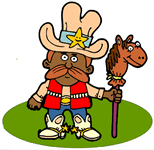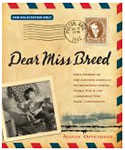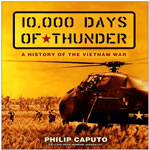|
|
Their Own Words, Pictures, & Sounds: Primary Sources in Learning
|
Teaching and Learning HistoryPrimary sources can be exciting resources for learning when students are able to make personal connections to the contents of these materials. Go to Kids-Learn Elementary and Middle School for ideas on document-based questions. Check out another example at Radio. The key is building meaningful applications. Seek out photographs and other materials that contain the experiences of children. Explore the following photographs of children through history. Go to the New York Public Library Digital Gallery. Select photos from a particular time period that could be use to compare another time period. Or, select photos that could be used to build a timeline. Also, look for visuals that could be used to represent a day in the life of a person from a particular era. Design assignments that immerse children in a particular time or place using artifacts, photographs, maps, and other materials. Ask students to place themselves in that time or place. Use bubbles to describe what the people might have been thinking. Or, compare the historical setting to what it would be like today. How have things changed? Download History.ppt for ideas. Then use one of the notepaper pages to design an activity that incorporates bubbles or audio. Use the Historical website for other ideas. Examine the resources at Explore PA History. Use this website for project ideas. What stories can your students retell? Through whose eyes will you see the historical event? Have them peeking into the picture or use bubbles for them to narrative the story. Go to Escrapbooking. Examine the Definitions section and review the elements of primary sources. Notice how students from Alton, MO used primary sources in their third grade granparent stories. Use the folllowing website for other ideas:
Compare Two ResourcesMany social studies standards ask students to compare sources, documents, or perspectives. Use tools such as Inspiration or PowerPoint starters to provide space for students to make comparisons and draw conclusions. For example, ask students to compare two historical documents, letters, diary entries, or other original documents. Right-click and Save as Target the sources2.ppt document. Create a student assignment asking learners to make a comparison between two resources. The resources can be websites, books, videos, or other materials. What They CarriedLet's use the example of the topic - What They Carried. This topic could be applied throughout history whether talking about what people carried on the Trail of Tears or the Oregon Trail. Connect to your personal possessions. What do you carry on a trip? Why? What would you save in a disaster? What would you leave behind in a time of war? Think about all the situations where people carry things through history:
To save the starter project, right click on the words Backpacks and Suitcases, Carts, then choose Save Target As. Use the Hoursehold Objects section of the Historical website for historical artifacts. Examine the Leaving Things Behind from the Smithsonian PDF for ideas. |
Document-based InquiryThink about all the ways you can bring history alive through primary source documents. Students need to be able to analyze historical documents. Start with Explore and adapt the analysis worksheets from NARA (NARA Worksheets (PDF files): Artifact, Cartoon, Document, Map, Photograph, Poster, Sound). Create an Analysis Worksheet for your grade level. Then, create your own PowerPoint-based tool. If you need ideas, use the web evaluation project for inspiration. Use bubbles for identifying parts of primary documents. Search the National Archives for particular treaties, papers, and other well-known documents. Also, search Marcopolo for a particular document and you'll find lesson ideas and links to primary sources.
|
Searching for DocumentsThis following section is still under development. These resources will get you started on various topics. Identify documents for use in activities. Copy into PowerPoint or Word to make an e-scrapbook for student use. Having trouble finding specific photos or examples? Use the site search option in Google. baseball site:www.janm.org |
Pioneers
|
Native Americans
|
Immigration
|
Japanese Internment Camps
|
Norman Rockwell and the 1940s
|
Vietnam War Era
The Wall by Eve Bunting
10,000 Days of Thunder: A History of the Vietnam War by Philip Caputo
Resources
Background Information
|
Other IdeasGeneral
People Teaching with Documents
|
Primary Sources and Virtual ExperiencesFlat Stanley Around the World
Family and Life HistoryStudent Projects
Student Resources
Teacher Resources
|
Learn MoreExplore the following materials for additional ideas:
|
| Developed by Annette Lamb, 7/06. |
 From the Library of Congress to local digital collections, people around the world are sharing primary sources that can be used to help better understand our world.
From the Library of Congress to local digital collections, people around the world are sharing primary sources that can be used to help better understand our world. 



 Farewell to Manzanar by Jeanne Houston
Farewell to Manzanar by Jeanne Houston


